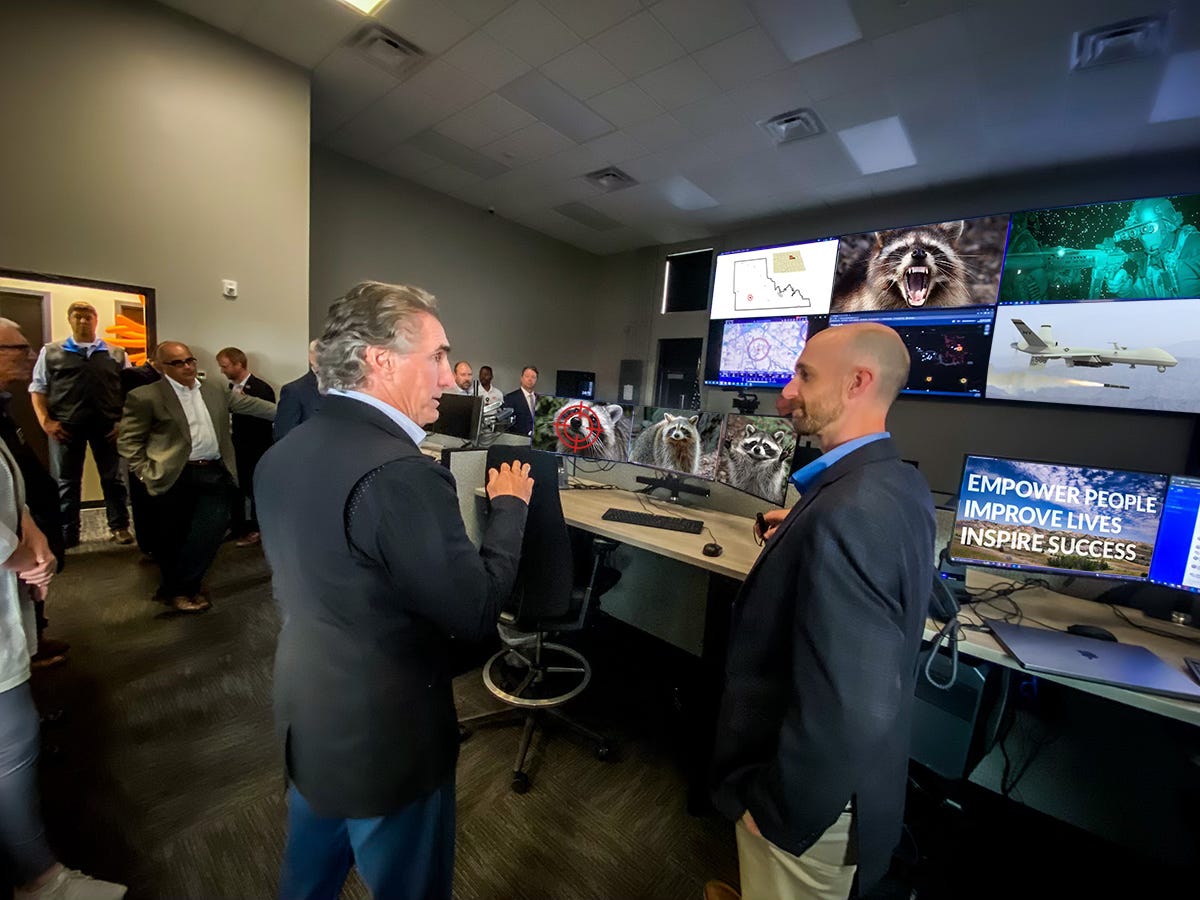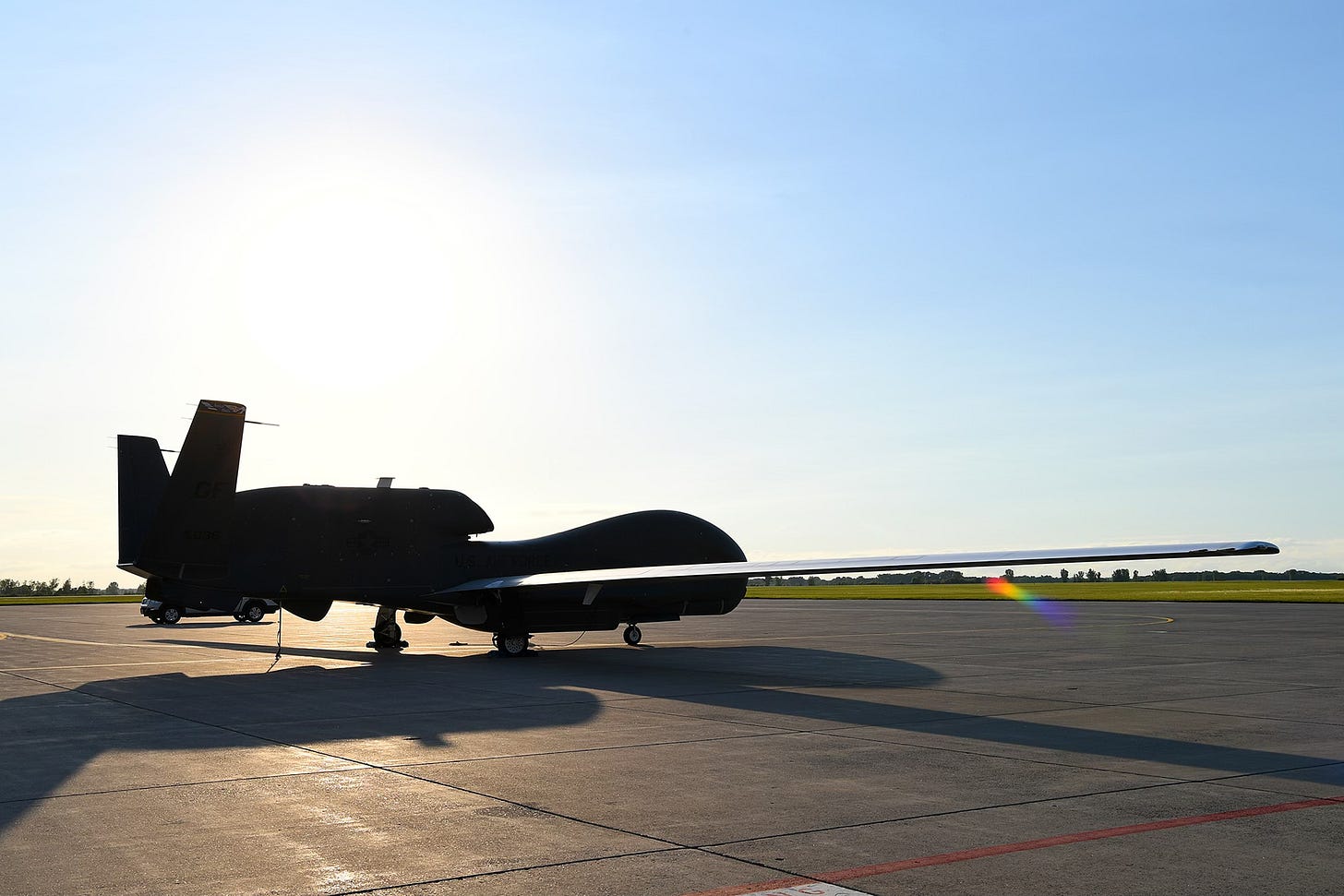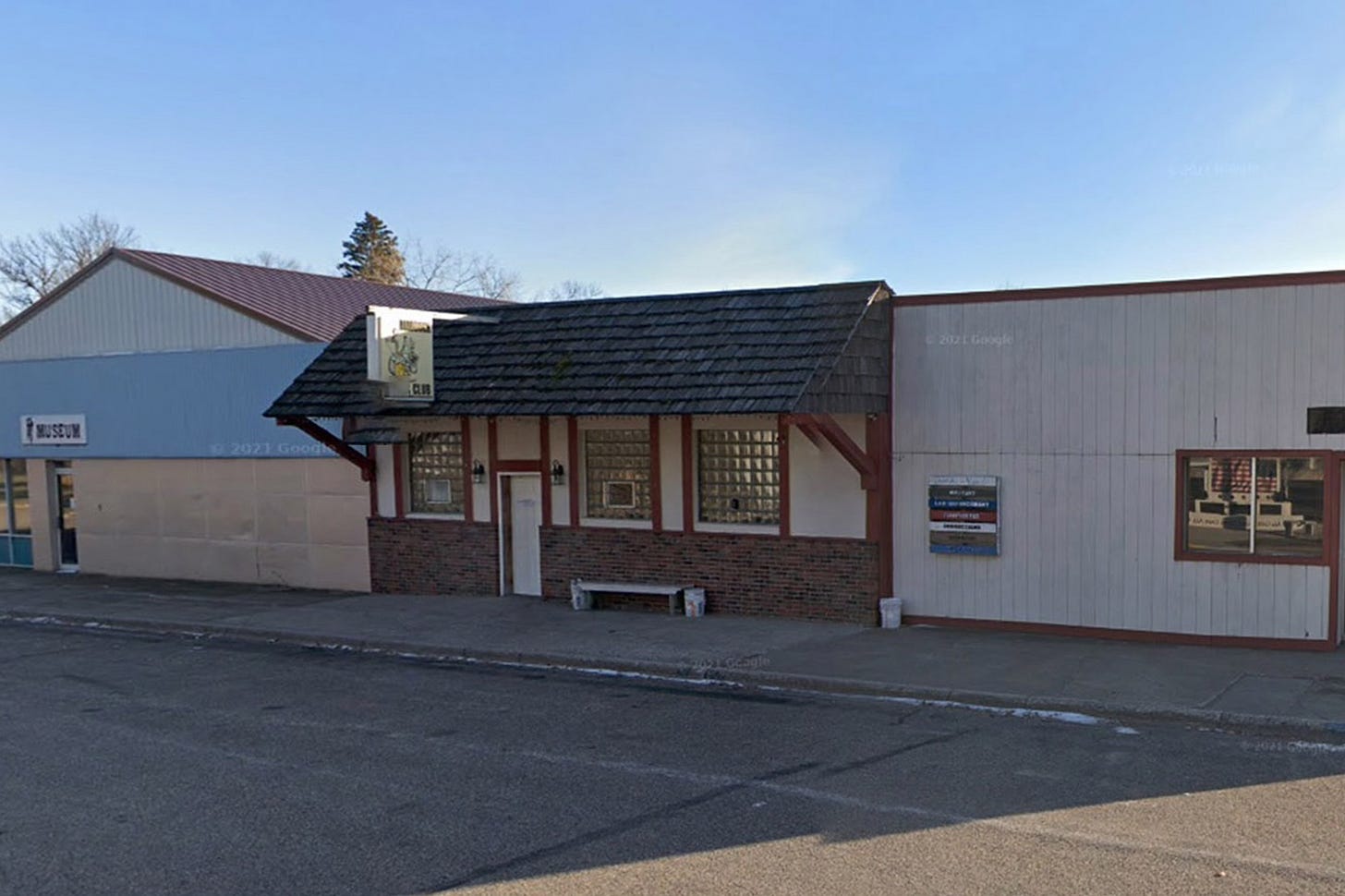Operation Enduring Rabies: Inside North Dakota’s 48-Hour Hunt for Rocky the Raccoon
How a small-town bar incident launched the largest coordinated wildlife operation in state history.

MADDOCK, N.D. — The quiet hum of a late summer harvest was interrupted on the evening of September 14, when Kathryn Fingle, guiding her family’s Peterbilt semi alongside her husband’s combine, noticed an unusual sight cutting across the North Dakota sky: two Predator RQ-1 drones, their silhouettes stark against the fading prairie sunset. Moments later, a convoy of North Dakota National Guard Black Hawk helicopters thundered overhead, the rhythmic pulse of their rotors sending a shudder through the wheat fields.
For Fingle, it was a scene eerily reminiscent of the days following September 11, 2001.
“I thought something serious had happened,” she recalled. “We all thought America was under attack. I had no idea it was about a raccoon.”
But to state officials, the stakes were clear.
In Bismarck, Governor Doug Burgum had been hastily briefed on the unfolding crisis. The target: a rogue raccoon, later identified as “Rocky,” who had infiltrated Maddock’s only bar and, in doing so, potentially exposed the entire town to rabies.
A Town Under Siege
Authorities had few details in the critical early hours following Rocky’s incursion. Where had he come from? How many civilians had he come into contact with? As local officials scrambled for answers, the North Dakota Department of Transportation issued emergency road closures. The Department of Public Instruction announced a two-hour school delay. And in a stunning precautionary measure, the North Dakota National Guard prepared for the very real possibilityof containing an entire city of potentially rabid individuals.
More alarming still was the prospect of Rocky and his handlers seeking safe harbor on private land.
In 2021, the North Dakota Legislature passed a bill allowing landowners to electronically post their property against trespassing. The measure, originally designed to prevent unauthorized hunters from encroaching on farmland, had inadvertently created a vast network of safe havens—one that a fugitive raccoon could easily exploit.
“The Game and Fish Department was racing against time,” Governor Burgum said in a statement. “If Rocky made it onto electronically posted land, we’d have no legal means of pursuit.”
Mobilizing Special Operators
Within twelve hours of the raccoon’s initial contact with Maddock’s population, Governor Burgum made an unprecedented decision: deploying the state’s most elite wildlife enforcement unit.
The Special Wildlife Expeditionary and Auxiliary Team (S.W.E.A.T.), an ultra-secretive division of the North Dakota Game and Fish Department, had rarely been seen in public prior to Operation Enduring Rabies.
At a nearby command center, senior officials reviewed tactical options. Would an aerial assault be necessary? Or should authorities opt for a door-to-door ground search? Some officials floated the idea of coordinated airstrikes over Maddock, utilizing the 5th Bomb Wing at Minot Air Force Base. Others favored deploying National Guard infantryto conduct a house-to-house sweep.
Ultimately, the Governor made the call: “Deploy the drones.”
A Statewide Effort Begins
At Grand Forks Air Force Base, two RQ-1 Predator drones were prepped for takeoff, each outfitted with infrared sensors and Hellfire missiles. The operation would be conducted under the state’s VANTIS network, the nation’s first beyond-visual-line-of-sight drone system—a project that had received over $50 million in legislative funding since its inception.
“For years, the Legislature has asked what VANTIS has done for our state,” said Rep. Mike Nathe (R-Bismarck). “I think Operation Enduring Rabies answered that question.”
The Governor also issued Executive Order 24-09, granting temporary emergency hunting authorization for raccoons statewide.
“By reinventing government and eliminating burdensome regulations, North Dakota citizens can work side-by-side with law enforcement to aid in the largest coon hunt in our state’s history,” Governor Burgum declared.

Codename: Knoephla
In the early hours of September 15, as intelligence reports flooded into the Governor’s Emergency Operations Center, a small but decisive meeting took place behind closed doors.
Governor Doug Burgum, his senior security advisors, and S.W.E.A.T. leadership huddled around a large digital map of Maddock, illuminated only by the blue glow of the state’s multi-million-dollar VANTIS drone network.
The stakes were too high to risk leaks. If the press got wind of a potentially rabid raccoon on the loose, panic could spread faster than the virus itself. The mission required total secrecy.
That’s when Burgum himself proposed the codename:
"We need something discreet. Something deeply North Dakotan, but completely unassuming."
For a moment, the room was silent. Then, an aide tentatively raised his hand.
"Sir… Knoephla?"
A murmur rippled through the room.
The hearty, creamy soup was beloved across North Dakota but largely unknown beyond its borders. A perfect cover.
"Knoephla…" Burgum repeated, rolling the word over in his mind.
Then, he nodded.
"From now on, Rocky is Knoephla. Spread the word. But only to those who need to know."
With that, the mission to capture and kill Knoephla was officially in motion.
The Breakthrough

On the morning of September 16, intelligence analysts at Grand Forks Air Force Base detected a heat signature within Maddock’s city limits. Simultaneously, hunters on the ground identified raccoon droppings near a residential neighborhood.
“We have eyes on the target,” a senior administration official confirmed.
S.W.E.A.T. operators, outfitted with night vision, ballistic riot shields, and Heckler & Koch MP5 submachine guns, moved into position outside a modest, single-story home—one that was suspected of harboring Rocky, now officially designated “Knoephla.”
Inside the Grand Forks command center, Governor Burgum and his top advisors watched the raid unfold in real time. North Dakota National Guard Major General Alan Dohrmann narrated the events as they streamed live from a body camera strapped to Game and Fish Director Jeb Williams.
“S.W.E.A.T. has reached the target,” Dohrmann said.
The team stacked up at the front door, their movements swift despite the collective creak of old knees and tactical belts.
Then, confirmation came through the radio.
“Visual on Knoephla. Target is inside.”
A battering ram shattered the door.
Flashbangs ignited the early morning sky.
A flurry of tactical maneuvers followed. Agents breached the kitchen, where Knoephla was perched on the countertop, his beady eyes reflecting the red glow of laser sights.
“We have visual on Knoephla!” an operator shouted.
Then, seconds later, in what seemed like an eternity:
“The Knoephla is cold. Repeat, Knoephla EKIA.”
Enemy Killed In Action.
The command center fell silent.
Then, Governor Burgum spoke:
“We got him.”
North Dakota’s rabies nightmare was over.
The Aftermath
A photo of Rocky’s lifeless body was uploaded into the North Dakota Game and Fish Department’s Animal Database, confirming his identity with 99.9% accuracy. His remains were placed in a Dollar General plastic bag, while his suspected human handler was detained by the Benson County Sheriff’s Office.
However, forensic testing at the North Dakota State Crime Lab later confirmed the public’s worst fears: Rocky had tested negative for rabies.
Still, officials defended their actions.
“We had to act,” the Governor’s Rabies Taskforce Director said. “Imagine if we had done nothing.”
As dawn broke over the prairie, Rocky’s body was discreetly loaded into the back of a county garbage truck and driven to a landfill. Only a handful of county employees and S.W.E.A.T operators watched as North Dakota’s most-wanted fugitive was laid to rest.
North Dakota Responds
Reaction across North Dakota has been mixed. Some praised the swift and decisive action of law enforcement. Others questioned whether the Governor had overstepped his authority.
In Maddock, the town where it all began, residents were more philosophical.
“You know, I don’t know what to think,” said one local man, standing outside the now-infamous bar. “We lost a good coon, but at least we can all drink in peace. And I guess that’s really all that matters.”
A Lasting Legacy

In Maddock, where it all began, the only thing left to commemorate September 16th is a lowly framed photo of Rocky hanging inside the Maddock Bar—his final resting place immortalized in neon bar lights and cigarette smoke.
But for those who know to ask, the bartender will still mix a special off-menu drink in Rocky’s honor.
Unofficially dubbed "The Knoephla is Cold", the cocktail—a chaotic blend of Red Bull, Fireball, and Busch Light, served in a dented Coors Banquet can—is not listed anywhere.
Yet on any given night, a regular might lean in and whisper to the bartender, “I’d like a Knoephla.”
And without a word, the drink is poured.
North Dakota never forgets.
The Flickertail Times is a satirical blog. While some individuals and institutions depicted in our stories are real, the events described are fictionalized for humorous commentary and should not be taken as factual.





